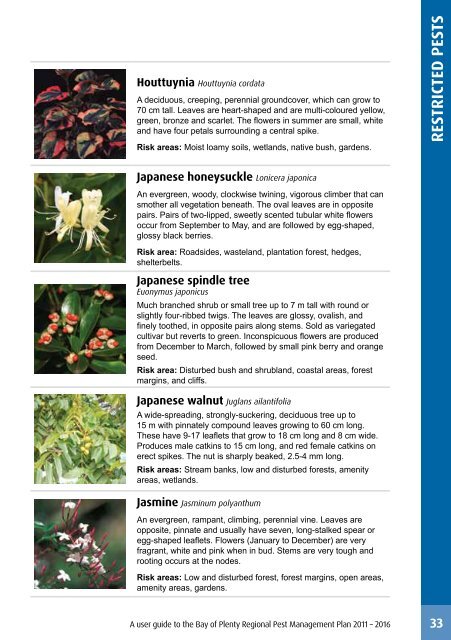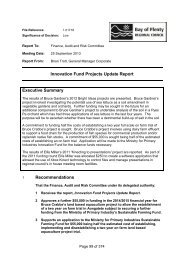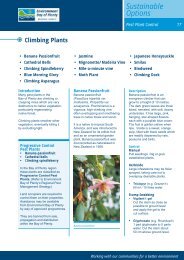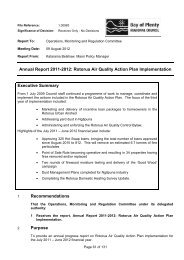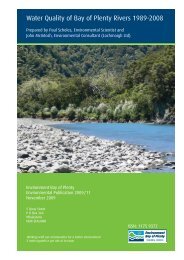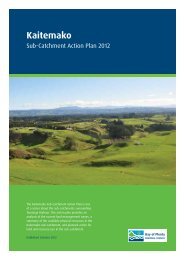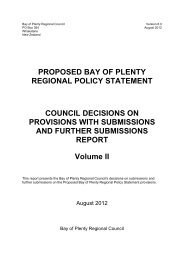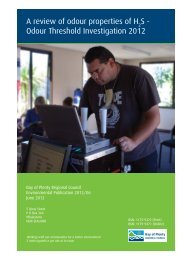Pests of the Bay of Plenty - Bay of Plenty Regional Council
Pests of the Bay of Plenty - Bay of Plenty Regional Council
Pests of the Bay of Plenty - Bay of Plenty Regional Council
- No tags were found...
Create successful ePaper yourself
Turn your PDF publications into a flip-book with our unique Google optimized e-Paper software.
Houttuynia Houttuynia cordataA deciduous, creeping, perennial groundcover, which can grow to70 cm tall. Leaves are heart-shaped and are multi-coloured yellow,green, bronze and scarlet. The flowers in summer are small, whiteand have four petals surrounding a central spike.Risk areas: Moist loamy soils, wetlands, native bush, gardens.RESTRICTED pestsJapanese honeysuckle Lonicera japonicaAn evergreen, woody, clockwise twining, vigorous climber that cansmo<strong>the</strong>r all vegetation beneath. The oval leaves are in oppositepairs. Pairs <strong>of</strong> two-lipped, sweetly scented tubular white flowersoccur from September to May, and are followed by egg-shaped,glossy black berries.Risk area: Roadsides, wasteland, plantation forest, hedges,shelterbelts.Japanese spindle treeEuonymus japonicusMuch branched shrub or small tree up to 7 m tall with round orslightly four-ribbed twigs. The leaves are glossy, ovalish, andfinely too<strong>the</strong>d, in opposite pairs along stems. Sold as variegatedcultivar but reverts to green. Inconspicuous flowers are producedfrom December to March, followed by small pink berry and orangeseed.Risk area: Disturbed bush and shrubland, coastal areas, forestmargins, and cliffs.Japanese walnut Juglans ailantifoliaA wide-spreading, strongly-suckering, deciduous tree up to15 m with pinnately compound leaves growing to 60 cm long.These have 9-17 leaflets that grow to 18 cm long and 8 cm wide.Produces male catkins to 15 cm long, and red female catkins onerect spikes. The nut is sharply beaked, 2.5-4 mm long.Risk areas: Stream banks, low and disturbed forests, amenityareas, wetlands.Jasmine Jasminum polyanthumAn evergreen, rampant, climbing, perennial vine. Leaves areopposite, pinnate and usually have seven, long-stalked spear oregg-shaped leaflets. Flowers (January to December) are veryfragrant, white and pink when in bud. Stems are very tough androoting occurs at <strong>the</strong> nodes.Risk areas: Low and disturbed forest, forest margins, open areas,amenity areas, gardens.A user guide to <strong>the</strong> <strong>Bay</strong> <strong>of</strong> <strong>Plenty</strong> <strong>Regional</strong> Pest Management Plan 2011 – 201633


